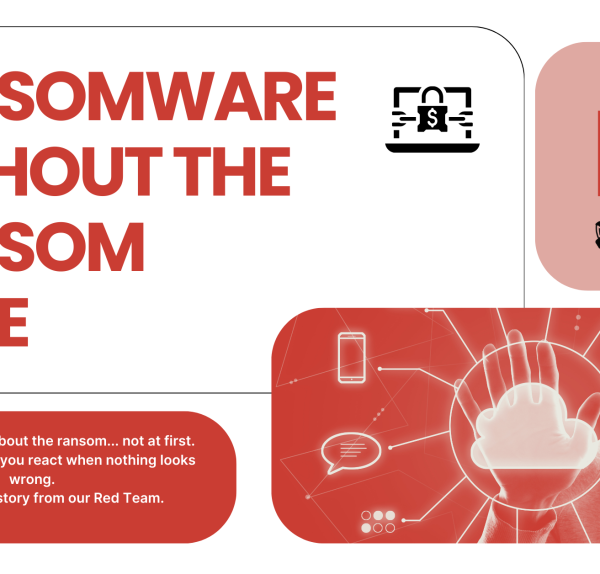In the wake of recent cyberattacks, organizations globally face the daunting challenge of navigating an ever-evolving threat landscape, highlighting the urgent need for risk-based cybersecurity. Incidents like the MOVEit software breach, affecting over 60 million individuals, and the cyberattack on UnitedHealth Group’s tech unit, Change Healthcare, by the “Blackcat” ransomware group, underscore the sophistication of modern cyber threats and the vulnerabilities pervading digital infrastructures.
Know more about potential futures and cyber threat perspectives of 2024.
The Noisy Tide of Cyber Alerts
Chief Information Security Officers (CISOs), cybersecurity teams, and IT professionals find themselves in an unenviable position. Tasked with defending their organizations against these multifaceted threats, they face a barrage of challenges. The primary issue isn’t the lack of tools or technologies; it’s the overwhelming flood of alerts and the complexity of prioritizing which vulnerabilities to address first. Traditional security measures, while necessary, often yield an avalanche of alerts, many of which may not pose an immediate or significant risk to the organization. This noise makes it challenging to focus on vulnerabilities that could have the most business impact, leaving critical gaps in the organization’s defense.
The Need for a Strategic Framework
The need to transition from a reactive to a proactive cybersecurity posture is clear. Currently, many organizations operate in a mode where threats are dealt with as they come, without a strategic framework for prioritizing risks based on their potential impact on the business. This approach is not only inefficient but also unsustainable in the face of increasingly sophisticated cyber adversaries.
The solution lies in prioritizing vulnerabilities based on business priorities and the potential business impacts of an attack. By adopting this strategy, CISOs, cybersecurity teams, and IT professionals can focus their efforts where they matter most, ensuring that the most significant risks to the organization are mitigated first. This not only optimizes the use of limited resources but also aligns cybersecurity efforts with the organization’s overall business objectives.
Yet, the business lines still struggle to fully grasp the cybersecurity jargon and cyber defenders can’t make a move without a clear strategic direction.
Empowering Cyber Teams with Orchestration Tools
In this new model, the role of advanced cybersecurity platforms becomes invaluable. These platforms empower our heroes with the ability to cut through the noise, delivering actionable insights that enable them to anticipate threats, prioritize vulnerabilities based on their business impact, and streamline their remediation strategies. By providing a clear overview of the organization’s cybersecurity posture and highlighting areas of highest risk, these platforms facilitate a more strategic approach to cybersecurity, where decisions are driven by data and aligned with business goals.
Tools like XRATOR Operator orchestration platform can aid in this process, providing a comprehensive view of the organization’s digital landscape. By understanding what matters most, CISOs can direct their focus and resources towards protecting these key assets.
1. Identify and Assess Your Digital Assets
The first step in Risk-Based Cybersecurity Prioritization is to identify and assess all digital assets within the organization. This includes everything from critical data to infrastructure components. CISOs must evaluate the value and sensitivity of these assets to determine the potential impact of their compromise. XRATOR Operator aid in this process, providing a comprehensive view of the organization’s digital landscape.
2. Leverage Threat Intelligence
To prioritize effectively, CISOs must have an in-depth understanding of the threats their organizations face. This is where threat intelligence comes into play. With XRATOR Operator embedded data on emerging threats and historical attack patterns, CISOs can anticipate potential vulnerabilities and assess the likelihood of various cyber threats. Integrating this intelligence with internal data on past incidents and current security posture allows for a more nuanced risk assessment. Armed with this knowledge, CISOs can prioritize cybersecurity measures that counter the most probable and damaging threats.
3. Implement a Quantitative Risk Analysis Model
Quantitative Risk Analysis (QRA) models offer a systematic way to prioritize cybersecurity initiatives based on potential impact and likelihood. By assigning numerical values to both the potential impact of a security breach and the likelihood of its occurrence, CISOs can calculate a risk score for different threats and vulnerabilities. This data-driven approach ensures that decision-making is objective and grounded in the specific context of the organization. Using XRATOR Operator QRA module aids CISOs in justifying cybersecurity investments to stakeholders and aligning security initiatives with business objectives.
Unlocking Risk-based Cybersecurity Prioritization with XRATOR Operator
XRATOR Operator, a Risk Orchestration, Automation, and Reporting (ROAR) platform, offers a seamless roadmap for this evolution. Unlike the reactive stance often taken in cybersecurity, XRATOR Operator focus on preemptive action, clocing the gaps between Tech and Business. This approach aligns with business impacts, ensuring that prioritization of vulnerabilities is both intelligent and strategic. With XRATOR Operator, businesses are equipped not just to defend but to thrive securely, marking a proactive step towards a resilient digital future.






